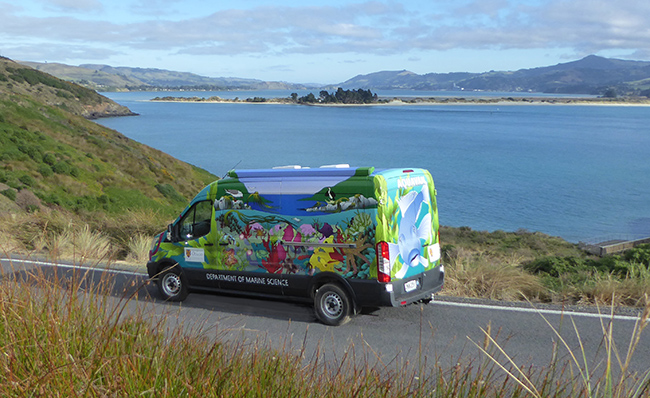
The Aquavan brings live marine critters and touch pools to schools and communities, to create awareness and understanding of the connectivity between river health and the coastal environment.
Specially designed to transport marine species, the van is equipped with chilled re-circulating seawater tanks and a mobile touch tank to support hands-on learning.
Discovering Our Coastal Connections schools programme
The Aquavan has been visiting river catchments in Southern NZ with a focus on river catchment regions in Otago, Southland and Canterbury.
The programme focuses on the connectivity between river health and the coastal environment using live animals, scientific equipment, enviroscapes and Storymap.
Programme objectives
Our Rivers:
- How do pollutants get into our coastal waters?
- How can we minimise our impact on the coastal environment?
Our Estuaries:
- What happens when the river meets the sea?
- How does sediment in the water affect the animals and plants that live there?
Our Coast:
- How do marine animals breathe, feed and mate?
- How do scientists learn more about the health of the coastal communities?
Download our Aquavan Flyer (PDF)
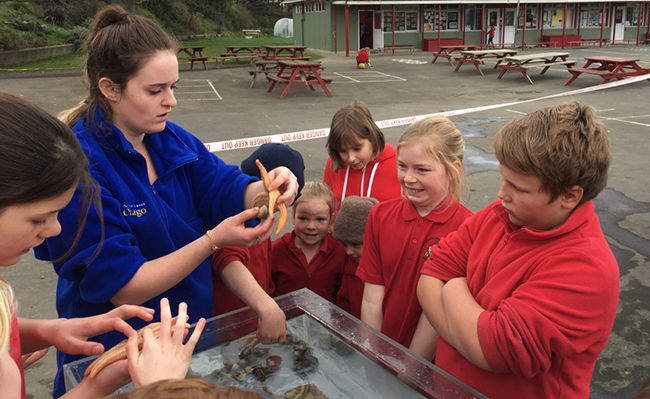
Handling live specimens from the touch tank.
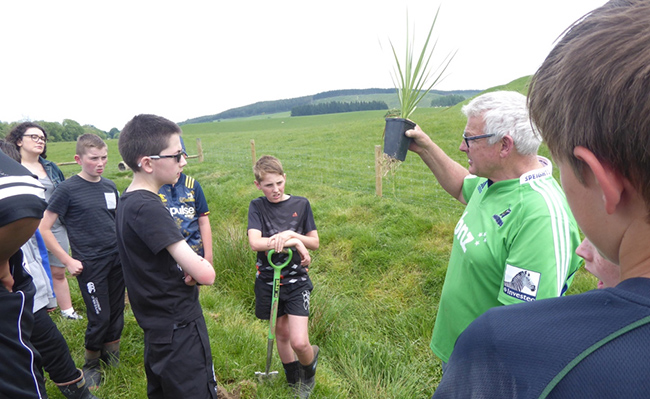
Getting ready to plant some native flax.
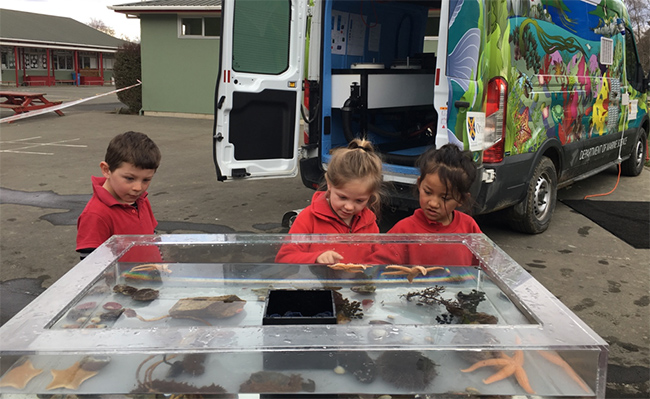
Viewing the marine critters up close!
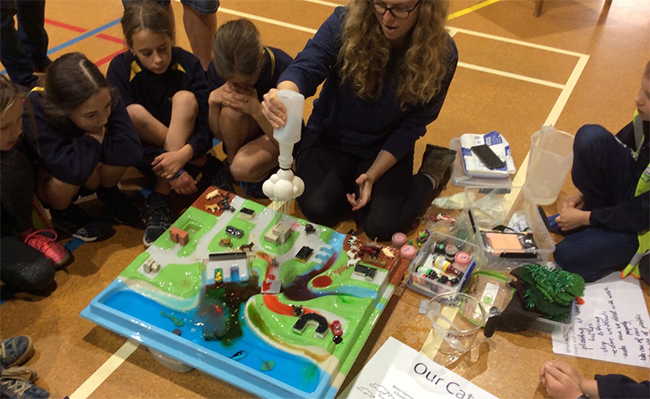
School pupils learn about the creation of farm runoff and its effects on marine life.
Aquavan science and art project
Sally Carson (Director of NZMSC) and Christine Keller (Artist) have collaborated to bring awareness to local issues of river health through art.
Christine's weaved tea towels are inspired by sediment plumes and images of sea tulips, sea stars and sea anemones.
Their collaboration was part of the 2019 Art + Water Exhibition – Mountains to the Sea.
Sally Carson – Discovering Our Coastal Connections
While local issues of river health are gaining awareness in NZ, the flow-on effect of deteriorating catchments on the marine ecosystem is 'out-of-sight, out-of-mind' for inland communities. However land use is strongly linked to water quality. Mismanagement of land can result in increased sedimentation, agrochemical point source pollution, reduced stream flow, and habitat degradation. These all contribute towards the severe depletion of the ecosystem services that our catchments provide. Increased awareness and understanding and improve management practices can make a difference to our waterways.
The Aquavan, with its recirculating seawater system, travels from sea to source to ignite community interest in learning more about their river catchment. Bringing live marine critters and science investigations to inland schools creates awareness and understanding of the connectivity between river health and the coastal environment in a dynamic and hands-on way. The marine animals and plants provide a focus for discovery learning and stimulus for discussion about environmental issues and responsibilities.
The programme has strong emphasis on empowering communities to regain their roles as guardians of their environment. Participants gain science understanding of the issues affecting their catchment and develop skills in environmental monitoring and knowledge mapping. Participation in environmental action highlights what they can do on a local level to improved environmental conditions.
Working alongside the wider community allows for local knowledge and skills to be profiled and creates opportunities for further engagement around both issues and solutions. Through work with artists, iwi and interest groups we hope to grow community interest and capacity for environmental action. Christine Keller, through her weaving, has capture the visual change of a deteriorating environment and the kitchen towel medium provide us with a daily reminder of the need for change.
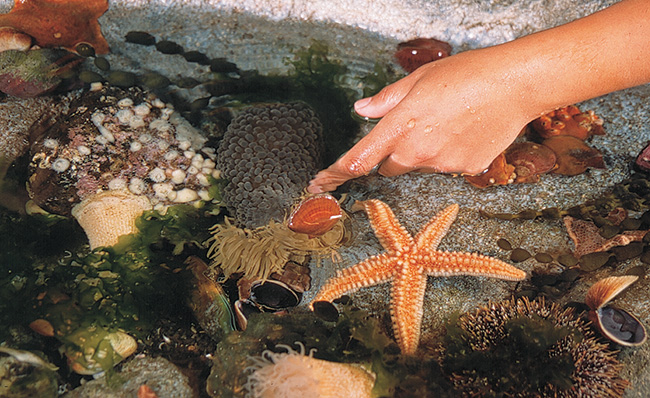
Making use of the Touch Tank.
Christine Keller – Effects of sediment plumes
We need to change our attitude to the everyday objects we use, our levels of consumption and the way we do agriculture.
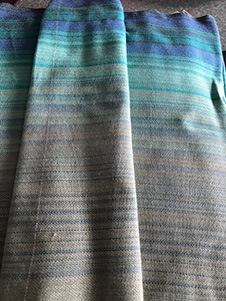 I started producing handwoven kitchen towels in Dunedin a few years ago. They are simple everyday objects which cost more than their mass-produced sisters due to the time and effort which goes into them. The added value is due to the hand made touch of the maker. They are very good at what they do – drying dishes and giving pleasure.
I started producing handwoven kitchen towels in Dunedin a few years ago. They are simple everyday objects which cost more than their mass-produced sisters due to the time and effort which goes into them. The added value is due to the hand made touch of the maker. They are very good at what they do – drying dishes and giving pleasure.
In the second Series I worked with Sally Carson from the Marine Studies Centre of Otago University. I learned about sediment plumes which appear in the river mouth if the land along the river is not cared for properly. I also saw the beautiful and amazingly colourful animals who live in the waters at the river mouth.
The label links to marine.ac.nz/marinelifeart, which gives people and insight into the work of the Aquavan project.
Education is important and I am using my art to help transport a message. These towels come in pairs and one towel has the colour of that sediment plume while the other one is inspired by the images of sea tulips, starfish, sea anemones and other inhabitants of our ocean.
I hope that I can interest more people to buy less, buy local and treat their objects well enough to last a very long time.

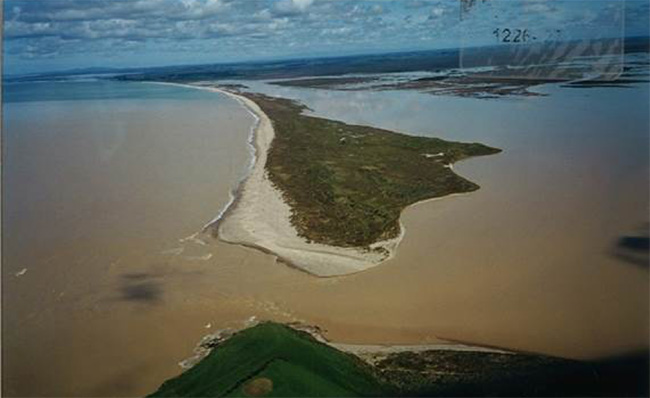
The Mataura River Sediment Plume in 1999.
Aquavan community events
TBC for 2024
